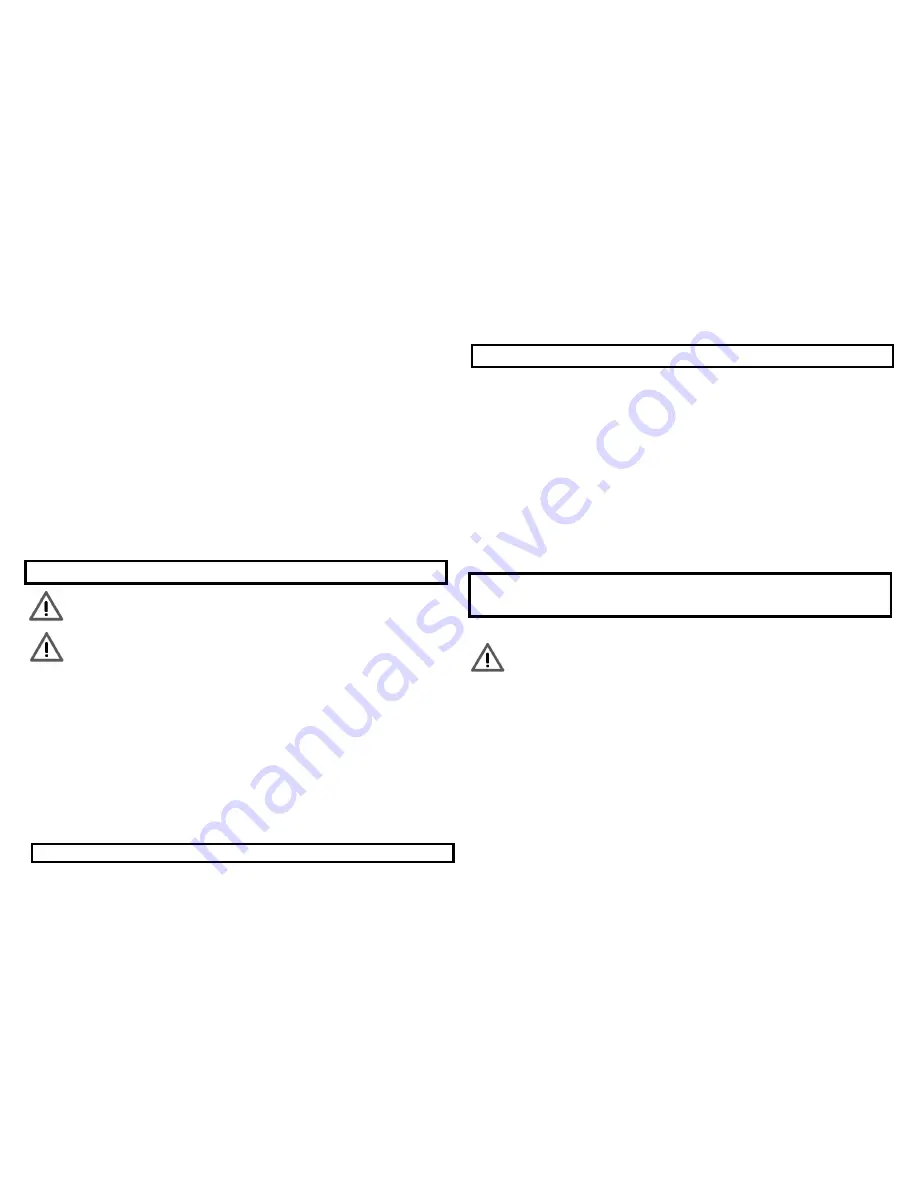
•
The machine consists of an assembly with a pump, which is encased in a shock absorbing
housing. For an optimal working position the machine comes with a lance and a non-slip
handle grip, whose shape and configuration comply with the applicable regulations.
•
Do not cover or modify the lance or the spray nozzles in any way.
•
The high pressure cleaner is designed to be used with cold or lukewarm (max. 60º); higher
temperatures can damage the pump.
•
Do not use water that is dirty, gritty or contains any chemical products, as these could impair
operation and shorten the life of the machine.
•
Accessories can be used to carry out work with foam cleaners, sand spraying.
6. ASSEMBLY
•
Position the washer as
NEAR
as possible to the water supply.
•
Connect the PVC tube to the detergent connection (FIG.3).
•
The washer must be used standing on a secure, stable, positioned as shown. FIG.2.
•
Fit the lance into the gun and rotating it until the two parts are completely locked FIG. 4.
•
Connect the gun to the high pressure hose FIG.5.
•
Connect the high pressure hose to the water outlet on the washer FIG. 6.
•
Connect the water supply hose to female coupler FIG.7, then connect to the water inlet of
the washer. The supply hose must have an internal diameter of at least 13mm (1/2 in.) and
must be reinforced. The water supply must be at least equal to the washer delivery capacity.
•
NOTE: The machine not suitable for connection to the potable water main (FIG. 15).
WARNING
The intake water temperature must not exceed 40º. The water supply must not exceed
0.7 MPa.
CAUTION
The washer must only be used with clean water; use of unfiltered water of corrosive
chemicals will damage the washer.
•
Push the motor switch to “OFF” position FIG. 10.
•
Check that the electrical supply voltage and frequency (Volt/Hz) correspond to those
specified on the washer rating plate. If the power supply if correct, you may now plug in the
washer.
7. OPERATION
•
Turn on the water supply tap fully.
•
Release the safety lock FIG.8 and FIG. 9, then press the trigger for a few seconds to
allow air to escape and to discharge residual pressure in the hose.
•
Keeping the trigger pressed, push the switch to start the motor FIG.10.
•
When re-starting the motor, always keep the trigger pressed.
NOTE: THE MOTOR ONLY RUNS WHEN THE TRIGGER IS OPERATED.
CORRECT USE OF STANDARD ACCESSORIES
•
The washer is equipped with the adjustable nozzle.
•
Jet adjustment from pencil to fan FIG. 11.
WARNING: DO NOT ADJUST THE NOZZLE WHILE THE TRIGGER IS SQUEEZED.
RECOMMENDED CLEANING PROCEDURE
•
Dissolve dirt by applying detergent with the fan jet to the dry surface. On vertical surfaces,
work from the bottom upwards. Leave the detergent to act for 1 to 2 minutes, but do not
allow to dry out. Apply the high from the surface, working from the bottom upwards.
•
Avoid allowing the rinsing water to run on to unwanted surfaces.
STORAGE (FIG.12 – FIG. 14)
•
Switch off the washer.
•
Turn off the water supply tap.
•
After use, the detergent residuals should be removed from the tank.
•
Discharge residual pressure by pressing the trigger until no more water comes out of the
lance nozzle.
•
Engage the gun safety lock.
•
Remove the plug from the socket.
•
Operate the washer with non-corrosive/ non-toxic antifreeze before storing for the winter.
WARNING:BEFORE REUSING, COMPLETELY FLUSH THE UNIT OUT WITH PLAIN
WATER. ANTI-FREEZE CAN DAMAGE PAINTWORK SO YOU MUST ENSURE THERE IS
NO ANTI-FREEZE LEFT IN THE SYSTEM BEFORE USING IT AGAIN.
8. MAINTENANCE
CAUTION
Before working on the washer, disconnect the plug from the power supply socket.
•
To ensure good performance, check and clean the suction and detergent filters after every
50 hours of operation FIG. 12.
•
Clean the nozzle with the tool provided. Remove the lance from the gun; remove any dirt
from the nozzle hole (FIG. 13) and rinse.






